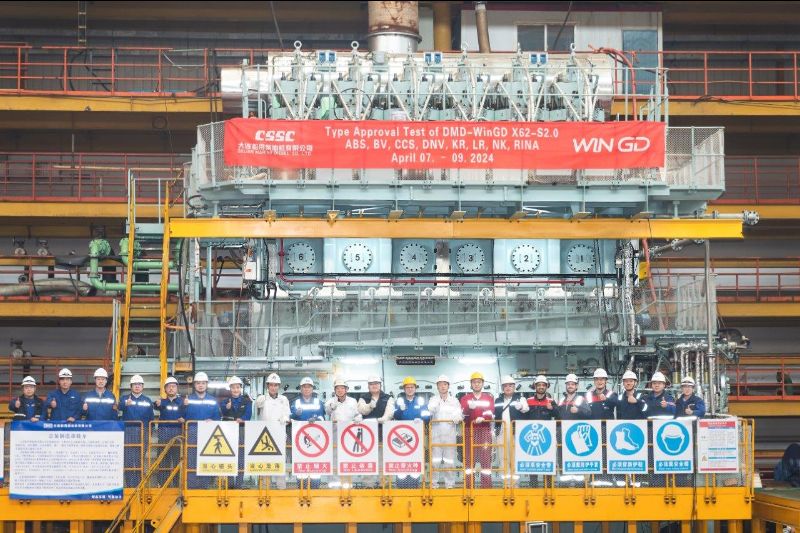
NYK Finds Air Bubbles Significantly Reduce Ship Resistance [REPORT]
Image courtesy NYK Lines
Post World War II, warships began to experiment with a system called Prairie-Masker which expelled bubbles through the hull and propellor blade tips in an effort to mask the acoustic signature of the ship’s machinery as a defense from submarines. In the process, they also found that these bubbles increased the efficiency of the hull as it move through the water.
Japan’s Nippon Yusen Kaisha and two NYK Group companies, the Monohakobi Technology Institute (MTI) and NYK-Hinode Line Ltd., have completed two years of experiments on the air-lubrication systems installed on two of the group’s module carriers, Yamato and Yamatai, and resultantly confirmed an average 6 percent reduction in CO2 emissions during actual sea passage.
The air-lubrication system effectively reduces the frictional resistance between a vessel’s bottom and the seawater by means of bubbles generated by supplying air to the vessel’s bottom. In fact, this was the world’s first permanent installation of a system using an air-blower. The system was installed on the two vessels when they were built, and the experiments were conducted during actual sea passage. This project has been subsidized through Japan’s Ministry of Land, Infrastructure, Transport and Tourism’s “Support for Technology Development from Marine Vessels for Curtailing CO2” project from fiscal 2009, and has also been supported by the ship classification society Nippon Kaiji Kyokai (ClassNK).
The experiments were designed to verify fuel reduction, examine the behavior of the air bubbles supplied to the vessel bottom under various operational and sea conditions, confirm the relationship between the amount of air supplied and its effect, and validate CO2 reduction.
After reviewing the data obtained by the two vessels for two years under various weather and sea conditions, the optimal control mode of how the bubbles behave in actual sea conditions was confirmed. Compared to the 10 percent reduction measured during sea trials, the reduction of CO2 emissions was confirmed to average 6 percent under various weather and sea conditions. This project was done as a challenge toward the world’s first permanent installation of such a system, and we are proud to have confirmed such meaningful energy savings during actual sea voyages.
The project has been completed, but NYK, MTI, and NYK-Hinode Line will continue to conduct performance analyses on actual vessels and device reviews during dry docks to achieve optimal operation. At the same time, the NYK Group will strive to install the system on other types of vessels for greater energy-saving operations.

Subscribe for Daily Maritime Insights
Sign up for gCaptain’s newsletter and never miss an update
— trusted by our 109,348 members

Get The Industry’s Go-To News
Subscribe to gCaptain Daily and stay informed with the latest global maritime and offshore news

 Join The Club
Join The Club








